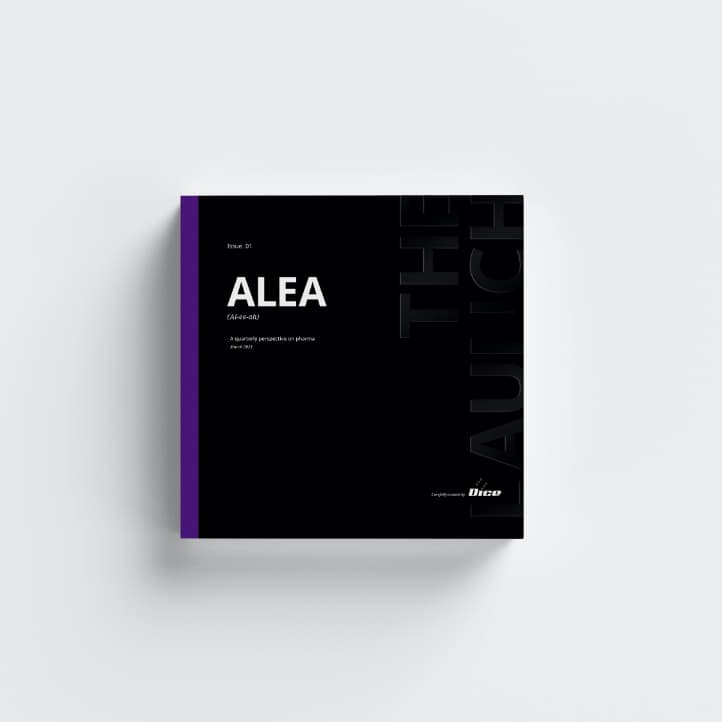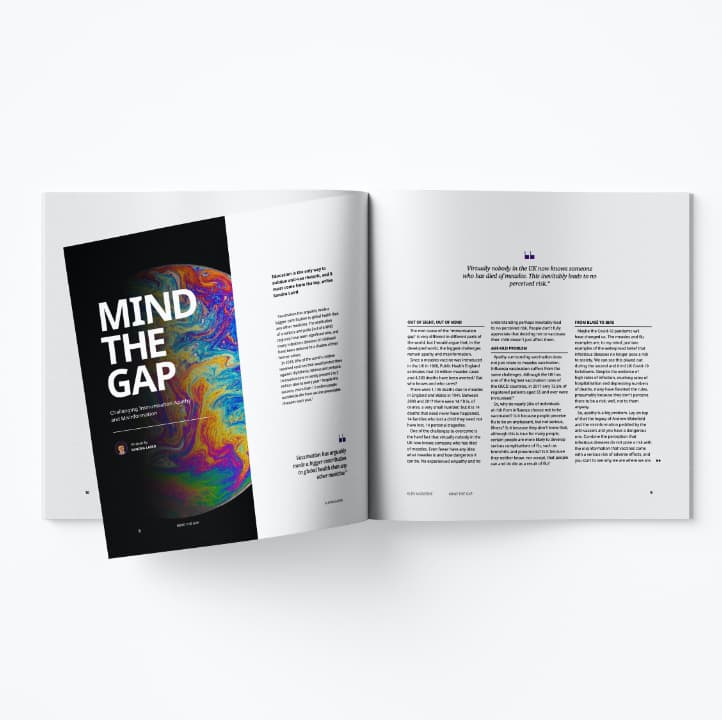
The Patient Will See You Now – The Evolution of the Doctor-Patient Relationship
Few relationships are as revered or as important as the one between a doctor and a patient.
In the words of Professor Teresa Hellín, Master in Bioethics at Ramón y Cajal Hospital, Alcalá University in Madrid: ‘‘The importance of an intimate relationship between patient and physician can never be overstated because in most cases an accurate diagnosis, as well as an effective treatment, relies directly on the quality of this relationship’’.1
Throughout the ages, the doctor-patient relationship has undergone significant transition. And the way that society has viewed the roles of doctors and patients has changed through history.2 This evolution has been influenced by many factors. In recent times, this change has been driven in the UK by, amongst other things, the advent of the internet and the digital age, the media, high-profile scandals, the rise of cosmetic surgery, litigation and very recently, Covid-19.2-12
Beneficent paternalism: the early years of the relationship
Since the days of ancient Egypt, man has attempted to master fears of helplessness, sickness and death through magic, mysticism and even theology. Healers were as much magicians and priests as they were doctors, and magic was an integral part of care. The notion that the doctor-patient relationship evolved from the priest supplicant relationship was proposed by Edelstein et al in 1937.11
For most of the past 3,000 years, the basic style of doctoring can be described as ‘beneficent paternalism’. The medical profession has adopted a well-meaning parental role in most patient encounters. Doctors have acted on behalf of, and for the good of, their patients. They have also wielded power over them. This role, which until recently has been taken for granted by society, produces behaviour that is disease-oriented with a strong tendency towards authoritarianism.2
In this paternalistic model of the doctor-patient relationship, the doctor uses their skills to choose the necessary interventions and treatments to restore the patient’s health or ameliorate their pain. Informing patients about the uncertainties and limitations of medical interventions is thought to undermine the faith so essential to therapeutic success. Any information given to the patient is selected to encourage them to consent to the doctor’s decisions.2
This paternalistic attitude is thought to be promoted by the dependency and submissiveness shown by many patients. It may lead to doctors overlooking the patient’s wishes and concerns, as they pursue their own professional agenda.13
New millennium, new relationship
Paternalism is an imbalanced interaction between doctor and patient and has been challenged during the last few decades.14 Over this period, an extensive body of literature has emerged that advocates a more patient-centred approach to medical care.11 It promotes a shift in the doctor-patient relationship from the ‘guidance-cooperation’ model to ‘mutual participation’, whereby power and responsibility are shared with the patient.15
Angela Coulter’s 2002 book ‘The Autonomous Patient’ ventured that paternalism has had its day. She talked about redefining the patient’s role to emphasise autonomy, emancipation and self-reliance rather than passivity and dependence.16
“No longer is he or she simply a victim of illness. In the 21st century patients must be treated as co-producers of their own health and care-managers when they are ill. They must be encouraged to see themselves as decision-makers, evaluators and stakeholders with a key role in shaping health policy.”16
This new alliance between the doctor and patient, based on cooperation rather than confrontation, requires the doctor to understand the patient as a unique human being, according to Enid Balint’s prescient 1969 article. Balint argued that the patient, not the illness, should be the primary focus of medicine such that the primary objective of the doctor is to listen to the patient in order to identify what the ‘real’ problem actually is, instead of simply eliciting signs and symptoms.17
In the 1990s, both Stewart et al.18 and Grol et al.19 also asserted that the patient-centred approach requires a willingness to become involved in the full range of difficulties patients bring to their doctors, not just their biomedical problems.
Professor Teresa Hellín goes as far as to suggest that patient-centricity is a fundamental requirement for being a physician: ‘‘…one of the essential qualities of the clinicians is interest in humanity, for the secret of the care of patients is in caring for the patient’’.1
Persistence of medical paternalism
Although the balance of power may have shifted more in favour of the patient, can the balance ever truly shift? There is evidence that, despite the current challenges to medical authority, a power imbalance still remains. Some patient organisations feel there is still intransigence among healthcare professionals, and a continuing need for a change in attitude. This has been described in terms of resistance to change, reluctance to share power, and protection of professional boundaries.3
To quote the senior officer of one user group, “I see this on the various agencies and boards that I belong to. Health professionals have changed very little, even after Bristol. Doctors and nurses, their agenda is to hold on to their power base.”3
One independent midwife talked about the way doctors, nurses and midwives were encouraged to think that they “knew best”.
“We may now teach ‘communication’ in new ways, but do we still instil in health professionals a sense that they know better than the patient?”3
In addition, some senior members of Royal Colleges articulated a more intransigent approach to change. “Professionals have to make a judgement about what people can handle and what they can’t handle,” said one senior officer. Another commented: “We always groan inwardly when we get very intelligent parents, because they’re terribly time-consuming.”3
In 2001, Rudolph Klein emphasised that attitudinal change is not easy to bring about, but that it is pivotal if the objectives of a more patient-centred service are to be met.20 A King’s Fund study into these changing relationships, published just after the turn of the millennium, contended that: “The continuing grip on services exerted by central government casts doubt on the extent to which power and control can really be shifted to patients.”3
So, while the climate surrounding medical practice may appear to be shifting the balance towards the patient, it is arguable that the medical profession remains firmly in control of key decisions concerning treatment, and that patients continue to expect this to be the case.5
Recognized models for the doctor-patient relationship15
In 1956, Szasz and Hollender described the three core doctor-patient relationships. These three models are still cited today.
Active-Passive Model
The active-passive model is the oldest of the three models and is based on the physician acting upon the patient, who is treated as an inanimate object. This model may be appropriate during an emergency when the patient may be unconscious or when a delay in treatment may cause irreparable harm. In such situations, consent (and complicated conversations) is waived.
Guidance-Cooperation Model
In the guidance-cooperation model, a doctor is placed in a position of power due to having medical knowledge that the patient lacks. The doctor is expected to decide what is in the patient’s best interest and to make recommendations accordingly. The patient is expected to comply with these recommendations.
Mutual Participation Model
This model is based on an equal partnership between the doctor and the patient. The patient is viewed as an expert in his or her life experiences and goals, making patient involvement essential for designing treatment. The physician’s role is to elicit a patient’s goals and to help achieve them. This model requires that both parties have equal power, are mutually interdependent and engage in activities that are equally satisfying to both parties.
While each of these models may be appropriate in specific situations, over the last few decades there has been increasing support for the mutual participation model whenever it is medically feasible.11
The impact of mass media and the digital age
Increased access to information for patients is a key facet of patient-centred care, and the internet has transformed access to this information for the majority. New technologies are opening up innovative ways of communicating, delivering services and creating opportunities for new and different relationships between health professionals and patients.3
The use of computers in the medical consultation has drastically changed the physician’s communication and personal treatment of the patient. Using computers in the practice of general medicine began in the United Kingdom in 1972. But by 1997, the use of computers in medical consultation was calculated at 92%. Now, virtually every medical consultation involves a computerized system.4 Using computers facilitates patient registration, screenings, repetition of prescriptions and notations related to each case, as well as decisions on support aids, preventive measures and the use of treatment protocols.4
While the advantages of using computers in medical practice remain clear, it is also clear that it can affect the physician-patient relationship in a detrimental way. It is believed that the use of technology in consultations can dehumanize the relationship because physicians pay more attention to the computer than to the patient. Computers can change the conversation pattern with the patient to one in which data are constantly being entered into the machine, depersonalizing patient care.4
Mass information technologies have also led to a greater number of patients exercising self-diagnosis, and to physicians continually being questioned. Naturally, this has played its part in eroding the trust between patients and physicians.4
The media and the growing mistrust of doctors
Increased public access to health information has been paralleled by a decline in public trust of the medical profession. Patients are more willing to question their doctor’s judgement, as the position of authority that doctors have occupied is undermined.
“There is a widespread view that respect and deference are all but dead and that professionals must now practice in an environment where their authority is not automatically ceded”, stated Mike Bury in his 2004 paper about patient-professional interactions.5
In May Ann Elston’s 1991 book, ‘The politics of professional power: medicine in a changing health service’, she highlights the role the media has played in challenging the autonomy of the medical profession. “Few would dispute that overt questioning of medical autonomy and expertise has increased markedly in the past decade in Britain… ‘Doctor-bashing’ and calls for reform have become major sports in the mass media.”7
Several relatively recent high-profile cases and subsequent inquiries in the UK have influenced public opinion, undermined doctors’ professional authority and accelerated the loss of trust amongst patients.5,6 Cases that have seriously eroded public trust in the medical profession and its ability to self-regulate include Alder Hey Hospital, Bristol Royal Infirmary and Harold Shipman.8
In addition, media-led health scares eliciting contradictory medical advice have raised further concerns amongst patients about whether they can trust their doctors.5 A good example in the UK is the controversy surrounding the childhood vaccination for measles, mumps and rubella (MMR). Papers by Wakefield et al. in 199821 and Wakefield and Montgomery in 200022 suggested that the MMR vaccine could be linked to an increased risk of developing bowel disease and autism. Despite strong scientific evidence to the contrary,23 many parents remained unconvinced of the vaccine’s safety, and immunisation uptake fell.24-27 These anti-MMR authors were eventually discredited, and their papers retracted,28-30 but the damage had been done.
Concerns regarding MMR vaccination highlight the way in which mistrust of doctors and access to health information through the media and internet can work in tandem.2 Vaccinations are a wonder of modern science and have, to quote my colleague Sandra Laird, “arguably made a bigger contribution to global health than any other medicine”. Yet this narrative often gets overshadowed by the power of bigger, almost irrepressible, forces.
The Shipman effect
In 2000, GP Harold Shipman was convicted of 15 counts of murder.31,32 A subsequent inquiry found that Dr Shipman had unlawfully killed at least 215 of his patients between 1975 and 1998.32
Shipman’s relationship with his patients may be characterized as paternalism on his part and deference on theirs. Shipman has shown all too clearly how this type of relationship is open to abuse.33 The Shipman case made people more uncomfortable about the control doctors can have over the end of someone’s life. People who had previously placed blind faith in the medical community became newly aware of the sheer power of the doctor, who held the hand of patients as they walked the tightrope between life and death.34
One worrying consequence of this case is the ‘Shipman effect’. Patients with end-stage COPD experience dyspnoea, which is often distressing for patients, their families and their professional carers. Although opiates are recognised to be effective in relieving dyspnoea, a study identified the Shipman case, and associated fears of litigation, as the key barrier to prescribing. Whilst this was seen as a particular problem within the primary care setting, it led GPs to admit patients to hospital rather than prescribe opiates.9
As a consequence of the growing mistrust of doctors, particularly in the often profit-driven field of aesthetics, legal claims in the UK have risen 15-fold since April 1995.10 This has eroded the doctor-patient bond, with more patients seeking second opinions, and led to the development of adversarial relationships.11
The Covid-19 pandemic
Undoubtedly, the relationship between doctor and patient has been disrupted by Covid-19. Patients have been physically and emotionally separated from doctors due to use of personal protective equipment (PPE), telemedicine and patients’ fear of accessing healthcare. During the Covid-19 pandemic, many patients may have received less care due to constraints, or even no care at all, as many have kept away from GP surgeries and hospitals.12
Empathic, clear communication is seen by patients as an indicator of competence and skill. Poor communication is often the differentiating factor between those doctors who are sued and those who are not. Telemedicine relies heavily on communication, which is impaired by loss of verbal cues, non-verbal cues and impatience. And, given the limitations of medical examination in this setting, some physicians who are unduly influenced by the pervading context may incorrectly attribute patients’ symptoms to the disease (as happened during SARS and MERS).12
So, there is a fear that a tsunami of claims may be approaching, particularly owing to delayed and missed non-Covid-19 diagnoses. The MPS (Medical Protection Society) has called for emergency laws to protect UK healthcare workers from criminal and regulatory investigation – a call supported by two thirds of the public, according to a YouGov survey of over 2,000 adults in Britain.12
Currently, much respect and empathy is being shown by the public and press towards healthcare workers. Could this translate to greater tolerance of medical error? In one sense, the crisis has escalated the break-up of the doctor-patient relationship; in another, it seems there may be a new love affair between the profession and society.12
Should we be innately mistrustful and judgemental of doctors?
Although the overriding impression from recent studies and data is that ascendant doctors frequently abuse their power and still need to be knocked off their pedestal, their role in this most precious of relationships, and in the care of the people, clearly remains paramount. And perhaps this is one of the reasons we often judge them so harshly.
Surely, most would agree that the overwhelming majority of doctors have no agenda other than to provide the best possible care for their patients, and that this is still the main reason they become medical practitioners.
In the words of Harry Hill, the comedian and former GP, “People who go into medicine have lots of options, they don’t have to do it. They can go and be lawyers or vets or dentists. Most of the time they’re people who are doing it because they want to. Doctors don’t really have any other agenda than treating people and getting people better. There’s nothing suspicious about their motives.”35
References:
1. Hellın T. Haemophilia 2002; 8(3): 450–4. DOI: 10.1046/j.1365-2516.2002.00636.x.
2. The Doctor-Patient Relationship: An Exploration of Trainee Doctor’s views by Sarah Elizabeth Burke. School of Education, The University of Birmingham, March 2008 (PhD thesis).
3. Gillespie R, Florin D, Gillam S. Changing Relationships: Findings from the Patient Involvement Project. Published by Kings Fund 2002. ISBN 1 85717 468 2.
4. Osorio JH, PhD Colomb Med. 2011; 42: 400–5
5. Bury M. J of Health Services Research and Policy 2004; 9(S1): 48–54. DOI: 10.1258/135581904322724130
6. Calnan MW, Sanford E. Quality and Safety in Health Care 2004; 13(2): 92–97. DOI: 10.1136/qshc.2003.009001
7. Elston MA (1991) “The politics of professional power: medicine in a changing health service.” In Gabe J, Calnan N and Bury M (eds.) (1991) The sociology of the health service. London: Routledge. pp.58–88.
8. Kaye J, Martin P. BMJ 2000; 321(7269): 1146–1149.
9. Gott M et al. Progress in Palliative Care 2010; 18(2): 79–84. DOI: 10.1179/096992610×12624290276700
10. Campbell D. The Guardian newspaper, Sunday, 8th January 2012. Accessed on 17.01.2021. Available at: https://www.theguardian.com/society/2012/jan/08/patients-sue-plastic-surgeons-faulty
11. Kaba R, Sooriakumaran P. Int J of Surgery 2007; 5: 57–65
12. Bradshaw P. Medicolegal Lead, Risk Prevention at the Medical Protection Society. BMJ, June 2020.
13. Myerscough PR and Ford M (Eds) (1996) Talking with patients: keys to good communication. Third Edition. Oxford: Oxford University Press.
14. Parsons T. The social system. New York: Free Press; 1951.
15. Szasz T, Hollender M. Arch Int Med 1956; 97: 585–92.
16. Coulter A (2002). The autonomous patient: ending paternalism in medical care. London: HMSO.
17. Balint E. J R Coll Gen Pract 1969; 17: 269–76.
18. Stewart M et al. Patient-centred medicine: transforming the clinical method. London: Sage; 1995.
19. Grol R et al. Fam Pract 1990; 7(2): 100–4.
20. Klein R. Health Service Journal 2001; 111(5770): 28–30.
21. Wakefield AJ et al. The Lancet 1998; 351(9103): 637–641.
22. Wakefield AJ, Montgomery SM. Adverse Drug Reactions Toxicology Review 2000; 19(4): 265–283.
23. Elliman DAC, Bedford HE. Archives of Disease in Childhood 2001; 85(4): 271–274.
24. Thomas D et al. Communicable Disease and Public Health 1998; 1(1): 44–47.
25. Wilson CB, Marcuse EK. Nature Reviews Immunology 2001; 1(2): 160–165.
26. Drop in MMR jabs blamed on media scare. BBC News, 26 June 1998, available [online] at: www.bbc.co.uk/news; accessed 17 August 2005.
27. Parents’ fear over MMR remain. BBC News, 13 February 2001, available [online] at: www.bbc.co.uk/news; accessed 17 August 2005.
28. Deer B. BMJ 2011; 342. DOI: https://doi.org/10.1136/bmj.c5347
29. Godlee F. BMJ 2011; 342. DOI: https:/doi.org/10.1136/bmj.c7452
30. Sathyanarayana Rao TS, Andrade C. Indian J Psychiatry. 2011; 53(2): 95–96.
31. Dyer C. BMJ 2000; 320(7231): 331.
32. Smith J (2002) The Shipman Inquiry: first report. London: HMSO.
33. Baker R. J R Soc Med 2004; 97(4): 161–165.
34. Alicia Queiro. Shipman effect: How a serial killer changed medical practice forever. BBC News, BBC Scotland. Accessed 14.01.2021. Available at: https://www.bbc.co.uk/news/uk-scotland-30192721#:~:
35. Harry Hill. The Big Issue. 10 Feb 2017.






